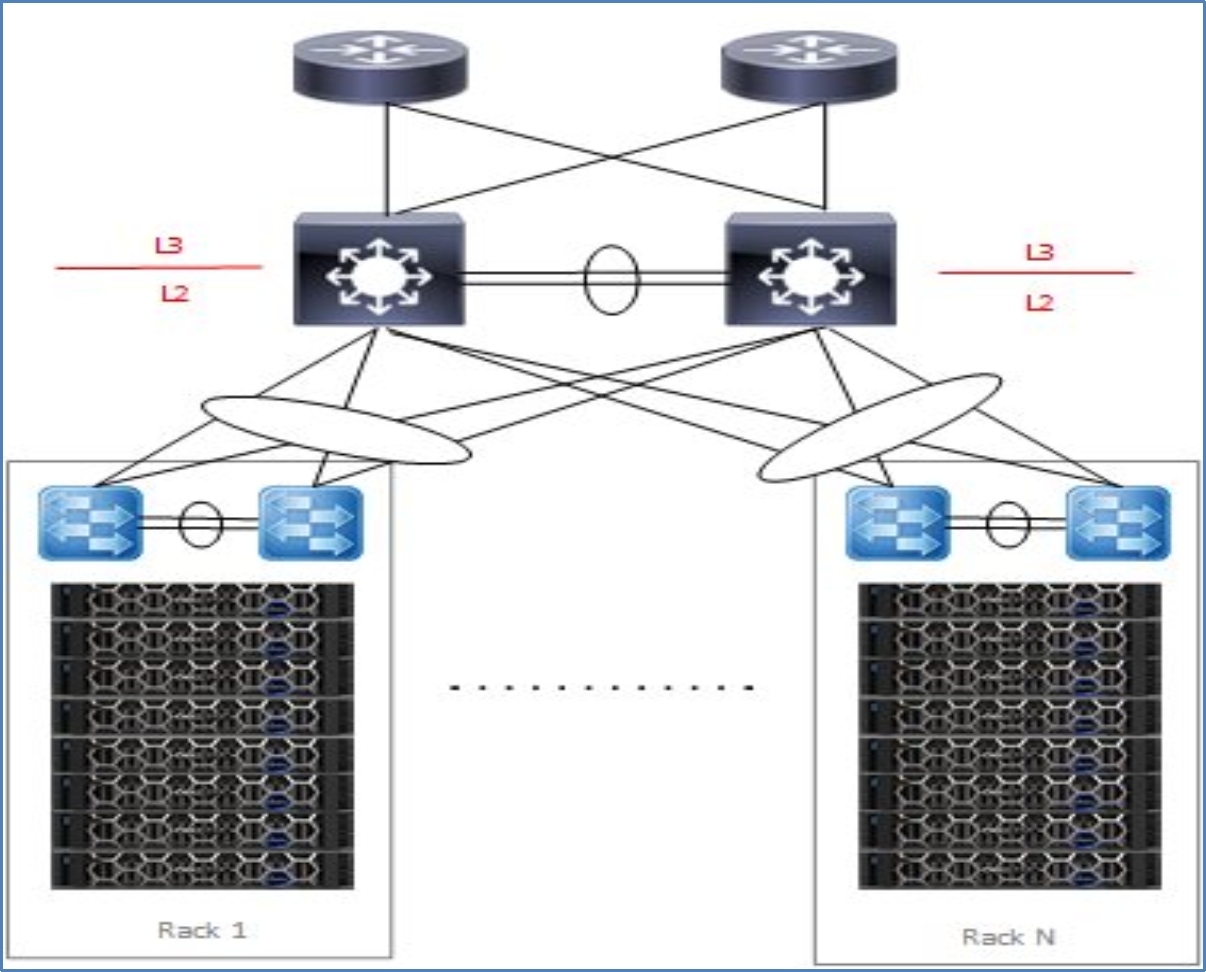Home > Integrated Products > VxRail > Guides > Architecture Guide—VMware Cloud Foundation 5.1 on VxRail > Traditional 3-tier (access/core/aggregation)
Traditional 3-tier (access/core/aggregation)
-
The traditional 3-tier design is based on a Layer 2 fabric, as shown in the following figure:

Figure 35. Traditional 3-tier Layer 2 fabric design
It has the following characteristics:
- VLANs carried throughout the fabric –increases the size of the broadcast domain beyond racks if multiple racks are needed for the infrastructure and VxRail clusters span racks.
- The aggregation layer devices of each pod are the demarcation line between L2 and L3 network domains.
- Default Gateway – HSRP/VRRP at the aggregation layer
- The NSX T0 Gateway peers with the routers at the aggregation layer.
Advantages:
- VLANs can span racks which can be useful for VxRail system VLANs like vSAN/vMotion and node discovery.
- Layer 2 design might be considered less complex to implement.
Disadvantages:
- Large VxRail clusters spanning racks will create large broadcast domains.
- Interoperability issues between different switch vendors can introduce spanning tree issues in large fabrics.
- The NSX T0 gateways for each WLD need to peer at the aggregation layer. For large-scale deployments with multiple WLDs, the configuration becomes complex.
- The size of such a deployment is limited because the fabric elements have to share a limited number (4,094) of VLANs. With NSX, the number of VLANs could be reduced so this limitation might not be an issue.
